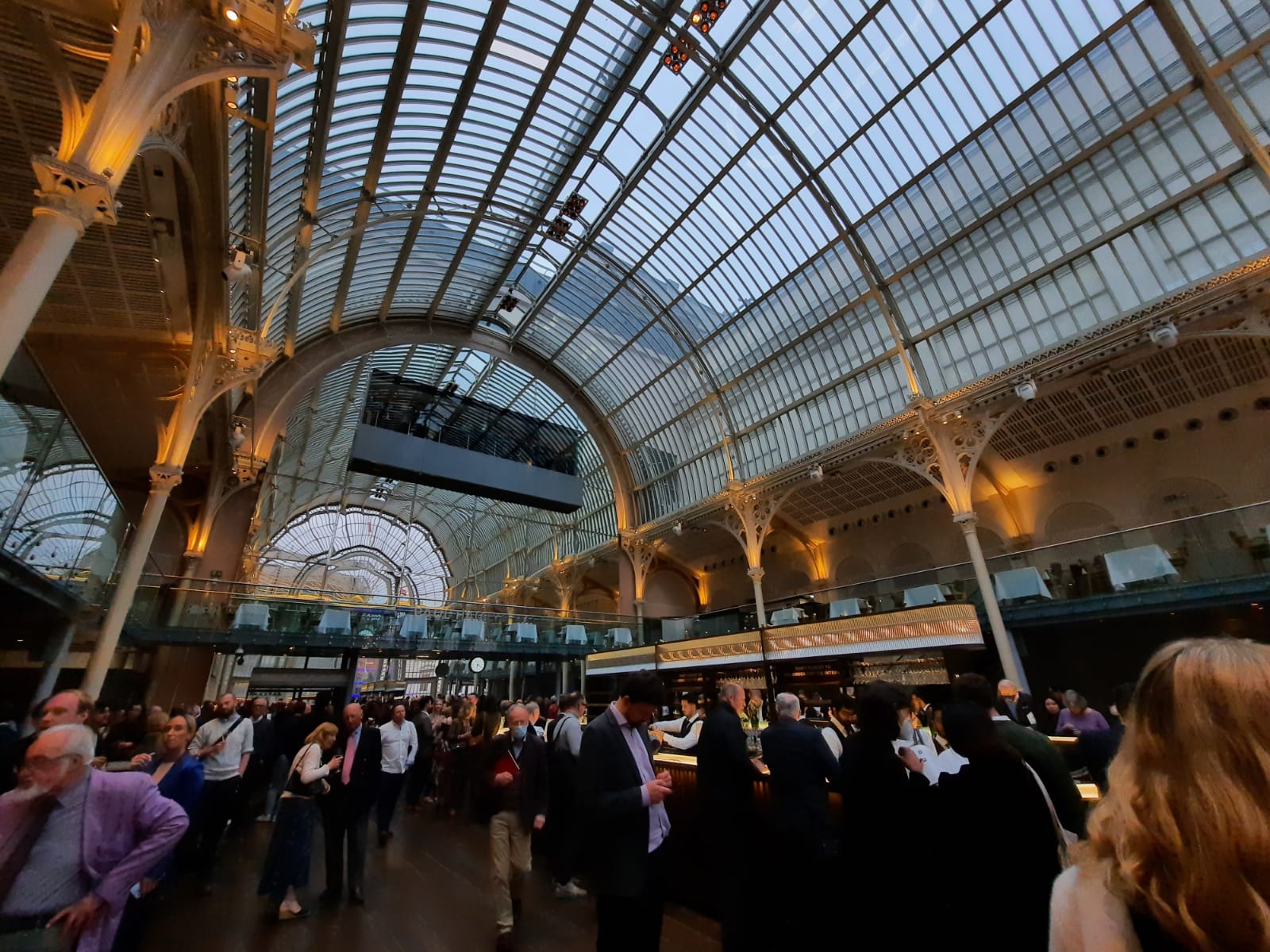Lohengrin – Royal Opera House, London
A review of Wagner’s chivalric opera Lohengrin, as seen at the Royal Opera House in London. A very entertaining few hours, supported by incredible design.

Lohengrin
Imagine the scene: you make plans with a friend to go to the opera. Something by Wagner. “Great,” you think, “I haven’t seen any Wagner before.” You know Wagner’s operas tend to be long. But that they remain popular despite Wagner’s anti-Semitism and posthumous Nazi connection that sees his music remain taboo in Israel to this day. So you think to yourself that, all in all, it’s a good opportunity to see what it’s all about. However. You then discover that this opera that in theory you knew would be long is… almost five hours… “Oh dear” you think. “I sometimes have trouble concentrating through regular-length operas. What have I got myself into?”
So imagine my delight when Lohengrin turned out to be really quite a lot of fun! The three acts and two intervals flew by. My friend and I had a lot to talk about over a drink at the latter. That such an extended operatic experience could be so enjoyable is down to two reasons in my mind. Firstly, inherent qualities in the opera itself. And secondly the absolutely incredible set and costume design for Lohengrin, which is a delight to see.
Let me tell you a bit about the story first, and then I can get into the rest. Lohengrin opens with a scene of refugees. The Duchy of Brabant is in chaos, and many citizens have fled to the court of King Heinrich. Obvious bad guy Count Telramund accuses his ward Elsa of murdering her brother Gottfried, who would otherwise have been the new Duke of Brabant. With nobody to fight for her honour, she calls on a knight in shining armour she has dreamt of. Guess what? He shows up! Drawn on a boat by a swan. He offers to clear her name (and marry her) if she promises never to ask his name or origins. A lot of the latter part of the opera is about evil power couple Telramund and Ortrud attempting to get her to do just that. And then the swan comes back for a finale!
A Bit Of Fun
Firstly, in terms of what I liked about the opera itself, it partly aligned with Wagner’s intentions and partly did not. As Wagner intended, the music is really stirring and in parts extremely beautiful. Jakub Hruša conducts the orchestra in a wonderful prelude to Act 1, for instance, which builds emotion through the use of an exciting crescendo. For Wagner, Lohengrin was an opera written holistically. What I mean by that is that he didn’t start with writing some lovely arias and then stitch them into a longer work (the way that many composers would attempt an opera). He tried to see it as one integrated artwork. What this means is that there aren’t any famous arias or sections from Lohengrin, or at least not ones that I recognised as I listened. Until, that is, to my surprise, the ‘here comes the bride’ wedding march popped up in Act III. Yes, that’s right, if you’ve been to basically any wedding then you too have heard some Wagner performed.
The bit that was not probably what Wagner intended was that there were some moments that were entertaining for being quite silly. I mean an opera with swans pulling boats and literally dreamy knights is going to risk falling into silly territory. And also the Royal Opera House’s staging of it has two of the silliest duels I’ve maybe ever seen. In the first one, Telramund is immediately defeated and then rolls around on the ground. Intentionally or unintentionally, I was very entertained. Wagner didn’t make up the story with the swans and everything, by the way. It came from medieval sources. But still.
With Nazi Swan Banners
The other thing I absolutely loved was the design. The sets are amazing. And require a lot of intricate changes to create different spaces. There is a more or less overt connection to WWII (and thus Wagner’s coopting by Nazis?). This manifests, for instance, in the citizens of Brabant preparing to fight under some rather Nazi-looking swan banners, or Telramund getting worked up into a Hitler-esque oratorical moment. Because the Nazi associations were for both good guys and bad guys I wasn’t quite sure of the intent, but there is no disputing that the sets by Paul Steinberg and costumes by Gideon Davey are incredible. You can see a few photos in this review.
What about the characters and performances then, to finish off? By far my favourite character was Ortrud, Telramund’s evil wife. She starts out meekly enough, and then gets into full-blown witch mode by the end of it. And she’s not entirely wrong – if I were marrying a mysterious swan guy without even knowing his name, I would want someone to question that decision. But anyway – two singers are sharing the role over Lohengrin’s run, and I had the pleasure of seeing Anna Smirnova take the role and run with it.
If I were to pick another star of the show, it would actually be the Royal Opera House’s chorus. They feature quite extensively in Lohengrin with some lovely choral arrangements. And are out in force – it’s nice to see so many performers back on stage. They are really magnificent.
Salterton Arts Review’s rating: 4/5
Lohengrin on until 14 May 2022
If you see this after your page is loaded completely, leafletJS files are missing.

